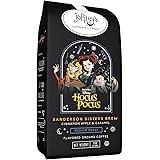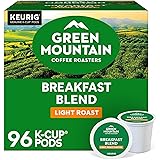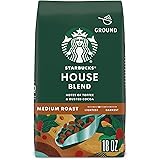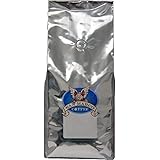Elevate Your Brew: An Expert’s Guide to Buying Great Coffee
Embarking on the journey of coffee discovery can be as exhilarating as it is sometimes daunting. As the accompanying video expertly introduces, understanding the nuances of how to buy coffee is pivotal to unlocking a world of diverse and delightful flavors. While you might already have a beloved brand or a go-to roast, the vast universe of specialty coffee promises experiences that could redefine your daily ritual. This comprehensive guide, building upon the insights from the video, aims to equip you with the knowledge to navigate the complex landscape of coffee purchasing, ensuring every bag you bring home is a step towards your perfect cup.
Mastering the Fundamentals: Golden Rules for Buying Great Coffee
Just as a skilled chef adheres to culinary principles, informed coffee buyers follow a set of “golden rules” to ensure quality and enjoyment. These foundational guidelines move beyond simple preferences, delving into the core characteristics that define truly exceptional coffee. By understanding these principles, you can transform your coffee buying habits from guesswork into a precise art, consistently selecting beans that promise an unparalleled brewing experience. Each rule contributes significantly to the overall quality and flavor potential of your coffee.
1. Prioritize Freshness: The Cornerstone of Flavor
The concept of “fresh” in coffee is often misunderstood, extending beyond mere longevity. As the video highlights, coffee begins a steady decline in quality immediately after roasting. This degradation is primarily due to the loss of volatile aromatics, which simply float away, and the onset of oxidation, leading to stale and sometimes unpleasant flavors. While coffee remains food-safe for an incredibly long time—even decades, as demonstrated by antique coffee tastings—its peak flavor window is comparatively brief. Understanding this window is crucial for enjoying coffee at its best.
Specialty coffee roasters typically provide a “roast date” on their packaging, offering transparency about exactly when the beans were processed. This contrasts sharply with the “best before” dates commonly found on supermarket coffees, which can be 12 to 24 months post-roast. Supermarket logistics, involving centralized distribution and slow shelf rotation, prioritize extended shelf life over peak freshness. Consequently, even a high-quality coffee purchased from a supermarket might be several months old, significantly diminishing its vibrant flavor potential. Always look for a roast date to gauge true freshness.
Furthermore, “fresh” does not always equate to “immediately ready to brew,” especially for espresso. Roasted coffee degasses carbon dioxide, and this process continues for several days. Brewing very fresh espresso, particularly within the first few days post-roast, can be challenging due to excessive CO2 release, which disrupts extraction and leads to inconsistent shots. Many baristas and enthusiasts recommend resting espresso beans for 7 to 10 days, or even up to two weeks, to allow sufficient degassing for optimal extraction. For filter coffee, the resting period is less critical, often just a day or two, with the optimal flavor window extending from one week to six weeks post-roast, depending on storage and roast level. Darker roasts, due to their more porous structure, tend to stale more quickly than lighter roasts, suggesting a shorter consumption window of perhaps four to six weeks.
2. Whole Bean Superiority: Grind On Demand
The debate between whole bean and pre-ground coffee is easily settled for those seeking the ultimate flavor experience. Whole bean coffee is undeniably superior for several compelling reasons. Firstly, it represents better value; while often packaged in a protective atmosphere, once a bag of ground coffee is opened, its surface area exposed to oxygen dramatically increases, initiating rapid degradation. You typically have only one to two days to enjoy ground coffee at its peak before its delicate aromatics dissipate and staleness sets in. Whole beans, encased in their protective shell, retain their freshness for significantly longer periods.
Secondly, the act of grinding coffee just before brewing is a sensory pleasure often overlooked. The burst of fresh aroma released during grinding is an integral part of the coffee experience, signaling the richness and complexity that awaits in the cup. Investing in a quality burr grinder allows you to unlock these fresh flavors, ensuring that each brew captures the full spectrum of notes the roaster intended. This simple step elevates not only the taste of your coffee but also the entire ritual of its preparation, making it a more enjoyable and aromatic start to your day.
3. Embrace Traceability: A Window into Quality and Ethics
Traceability in coffee is more than just knowing the country of origin; it signifies a deep commitment to quality and ethical sourcing. Historically, coffee was often labeled simply by country, such as “Guatemala” or “Colombia.” However, this broad classification reveals little about the specific flavors or growing conditions, as taste profiles can vary immensely even within a single country due to diverse microclimates and varietals. Imagine buying wine labeled only “France”; you’d want to know the region, the vineyard, the vintage. The same principle applies to discerning coffee selection.
Traceable coffee means knowing the specific farm, cooperative, or at least the distinct region from which the beans originated. This granular detail is not merely for connoisseur bragging rights; it’s a testament to the coffee’s inherent quality. The process of keeping coffee traceable—segregating lots from farm to consumer—adds cost and logistical complexity. Roasters only invest in this if the coffee’s quality merits a premium price. Therefore, traceability acts as a reliable shortcut to identifying coffees of superior taste and quality. Moreover, buying traceable coffee often means more of your money reaches the producers, fostering sustainable practices and better livelihoods in coffee-growing communities. This direct relationship between quality, cost, and ethical investment underscores the importance of seeking out well-defined origins.
4. Discover Seasonality: The Rhythm of Harvest
Just like fresh produce, coffee is a seasonal crop, and embracing seasonality is a hallmark of specialty coffee. Different coffee-producing countries around the globe have distinct harvest cycles, meaning raw “green” coffee beans arrive in consuming markets at various times throughout the year. While green coffee lasts longer than roasted coffee, its quality still diminishes over time. A roaster might typically carry a particular coffee for several months, but classically, some roasters might try to offer a specific origin, like a Guatemalan coffee, year-round, even if it meant selling beans that were past their prime for a portion of that period.
Specialty coffee roasters, committed to offering the best possible flavors, actively embrace this seasonality. This means their coffee offerings change regularly, often every six to eight months or even more frequently. While this might initially seem frustrating to consumers who find a favorite coffee disappearing, it’s actually a positive indicator of fresh, vibrant raw material. A constantly evolving selection ensures you’re drinking coffee harvested at its peak and processed with optimal care, translating directly into superior flavor in your cup. Look for roasters who frequently update their menu; this signals their dedication to the seasonal freshness of their green coffee supply.
Choosing Your Source: Where to Buy Coffee
The marketplace for coffee is diverse, with each retail channel offering distinct advantages and disadvantages. Understanding these differences is key to making informed decisions that align with your priorities, whether they are convenience, price, freshness, or selection. As the video outlines, supermarkets, local coffee shops, and online retailers represent the primary avenues for purchasing coffee, each catering to different consumer needs and offering varying levels of product information and quality.
1. Supermarkets: Convenience at a Compromise
Supermarkets excel in convenience and often offer the lowest prices due to their immense scale and competitive strategies. For many, integrating coffee purchases into their regular grocery run is a logistical ease. However, this convenience often comes with a significant trade-off, primarily in freshness. Supermarkets typically do not treat coffee as a fresh food item; their distribution models involve complex supply chains from supplier to distribution center to individual store shelves, a process that can take months. As mentioned, the prevalent “best before” dates rather than “roast dates” serve to obscure the coffee’s true age, encouraging consumers to view it as a long-lasting pantry staple rather than a perishable product at its peak within weeks of roasting.
While you can find well-roasted, even traceable, coffees in supermarkets, their extended journey to the shelf almost guarantees diminished freshness. The delicate aromatics will have largely dissipated, and the coffee will likely exhibit stale notes. If convenience and cost are your absolute top priorities, and you accept the compromise on peak freshness, then supermarkets can suffice. However, for those seeking vibrant, complex flavors, it’s important to adjust expectations or consider other purchasing options.
2. Coffee Shops: Expertise and Immediacy
Local coffee shops offer a compelling blend of convenience, expertise, and fresh product. Visiting a coffee shop allows for direct interaction with knowledgeable staff who can provide personalized recommendations based on your preferences. This conversational aspect is invaluable for beginners trying to navigate flavor profiles and processing methods. Furthermore, the coffee retailed in a shop is typically very fresh, often roasted within the last five to seven days, making it perfectly rested and ready for immediate brewing at home. This eliminates the need for a resting period, which is particularly beneficial for espresso preparation.
A significant advantage of buying from a coffee shop is the “try before you buy” opportunity. Since most shops sell the very coffee they brew, you can taste a prepared cup, discover a flavor profile you love, and then confidently purchase a bag of the same beans to replicate the experience at home. This direct experiential validation is a powerful tool for discovering new favorites and ensures satisfaction with your purchase. Supporting local coffee shops also strengthens community ties and fosters a vibrant local economy, adding another layer of value to your purchase.
3. Online Retailers & Subscriptions: Unparalleled Selection and Freshness
Buying coffee online, particularly directly from roasters, offers the greatest variety and often the freshest product. Many online roasters operate on a “roast-to-order” model, meaning your coffee is roasted only after your order is placed, then shipped almost immediately—sometimes the same day. This typically results in coffee arriving at your door just a day or two post-roast, ensuring unparalleled freshness. While this extreme freshness might require a short resting period for espresso (as discussed earlier), it guarantees you’re receiving beans at the very beginning of their optimal flavor window.
The breadth of selection online is unmatched, providing access to an enormous range of single-origin coffees, unique processing methods, and experimental roasts that might not be available locally. Online platforms also frequently offer subscription services, a fantastic solution for consistent supply and convenience. Subscriptions take the guesswork out of remembering to reorder, with fresh coffee arriving at your preferred frequency. Many enthusiasts find a balanced approach by subscribing to one roaster for a steady supply while periodically purchasing unique or experimental bags from other online sources or local coffee shops to continuously explore the diverse world of coffee flavors. This flexibility allows for both consistency and exciting discovery in your coffee journey.
Cracking the Code: Decoding a Bag of Coffee
Approaching the intimidating “wall of coffee” in a store or browsing countless options online can be overwhelming. However, by understanding the key information printed on coffee bags, you can confidently decipher what a particular coffee is trying to tell you about its taste. This section builds on the video’s guidance, delving deeper into roast degree, flavor descriptors, body, acidity, and processing methods, transforming abstract terms into actionable insights for your next purchase of great coffee.
1. Roast Degree: The Spectrum from Light to Dark
The roast degree significantly dictates a coffee’s flavor profile, influencing everything from acidity to bitterness. Generally, coffee is categorized as light, medium, or dark roast. In specialty coffee, the default tends to be light to medium, aiming to highlight the inherent characteristics and nuanced flavors of the bean’s origin. Lighter roasts typically feature higher acidity, bright fruit notes, and a more delicate body, preserving the unique “terroir” of the coffee. As the roast deepens, acidity diminishes, and bitterness increases, accompanied by notes of chocolate, caramel, and nuts, developed through the Maillard reaction and caramelization of sugars. Darker roasts, often used for espresso, prioritize a bolder, less acidic profile.
Supermarket coffees frequently employ a “strength” rating (e.g., strength 3-5) to indicate roast degree, rather than the true definition of strength (the ratio of coffee to water). While specialty coffee purists often criticize this terminology, it’s an attempt to communicate roast level to a broader audience; a higher “strength” generally means a darker roast. If a specialty coffee bag doesn’t explicitly state the roast level, it’s typically safe to assume it’s a light to medium roast. Roasters will usually specify if a coffee is a dark roast or intended for “espresso” (which generally implies a slightly darker roast than a filter-focused Omni roast), making it easier for you to align with your preferences for acidity or bitterness.
2. Flavor Descriptors: Art, Science, and Expectation
Flavor descriptors—those evocative words like “caramel,” “berry,” or “chocolate”—serve a dual purpose: they attempt to objectively describe the coffee’s taste profile while also enticing you to buy it. These descriptors are often the result of comparative tasting by expert Q-graders or roasters, who analyze the coffee alongside a range of other samples to identify distinct nuances. While you, the consumer, might not have the same comparative context, these words are intended to provide a compass for your palate. They are not indications of artificial flavoring but rather highlight inherent notes developed during the bean’s growth, processing, and roasting.
Understanding these descriptors requires a degree of interpretation. For instance, “caramel” or “toffee” often suggests sweetness and low acidity, while “citrus” or “berry” points to brighter, more acidic profiles. The distinction between “fresh fruit” (e.g., raspberry, lemon) and “cooked fruit” (e.g., jammy, candied orange) can further indicate the intensity and style of acidity. “Floral” or “elegant” might hint at a lighter body and delicate notes. Being aware that these terms are both descriptive and marketing-oriented helps set realistic expectations for the sensory experience. If a coffee promises “pineapple and whiskey,” brace yourself for an adventurous and likely “funky” profile, which isn’t for everyone.
3. Body: The Mouthfeel and Weight of Coffee
Body, or mouthfeel, refers to the perceived weight, thickness, or richness of coffee on your tongue. It’s distinct from flavor but significantly contributes to the overall drinking experience. Terms like “delicate” or “tea-like” suggest a light-bodied coffee, which some find refreshing, while others may perceive it as “weak” or lacking in traditional coffee character. Conversely, “creamy,” “rich,” or “full-bodied” describe a coffee with a heavier, more viscous texture. This characteristic is often influenced by the coffee’s origin, varietal, and processing method, as well as its roast level; darker roasts and certain processing methods can enhance body.
Roasters will often use specific language to highlight a coffee’s body, particularly if it deviates from a medium-bodied norm. If you prefer a robust, substantial cup, look for words indicating richness and fullness. If no texture words are explicitly used, a medium body can often be assumed, as it’s a common characteristic of many specialty coffees. Understanding your preference for body is essential, as it can significantly impact your overall enjoyment, especially for those who dislike a “thin” or “watery” coffee experience.
4. Acidity: Brightness vs. Sourness
Acidity in coffee is one of the most polarizing attributes, yet it’s crucial for defining brightness, vibrancy, and complexity. Desirable acidity is often described as “bright,” “juicy,” or “lively,” reminiscent of fresh fruits like citrus, berries, or apples. This is distinct from sourness, which is an unpleasant taste associated with underdeveloped roasts or improper brewing. Some drinkers adore high-acidity coffees, finding them refreshing and exciting, while others prefer very low-acid profiles, often associating acidity with an undesirable tartness.
To decode acidity from descriptors, look for fresh fruit words. “Berry,” “citrus,” “apple,” or “pear” almost invariably signal a coffee with noticeable acidity. The more pronounced these descriptors, especially berries or citrus, the higher the expected acidity. If fruit words are present but modified—such as “candied orange” or “jammy”—it suggests some acidity, but likely balanced or mellowed. Coffees with no fruit descriptors, instead focusing on “chocolate,” “caramel,” “nuts,” or “treacle,” typically have very low acidity. Knowing your personal preference for acidity will significantly guide your selection, allowing you to either embrace the vibrant zing or opt for a smoother, mellower cup.
5. Processing Methods and Fermented Flavors: A Distinctive Profile
Coffee processing methods profoundly impact the final cup profile, with “natural” (or “dry”) and “washed” being the two most common. Washed coffees involve removing the coffee cherry fruit from the bean before drying, typically resulting in cleaner, brighter, and often more acidic flavors. Natural processed coffees, conversely, involve drying the whole cherry with the bean inside, allowing the fruit’s natural sugars and flavors to infuse into the bean. This can lead to distinct “fermented fruit” flavors, which are often described as “tropical fruit” (pineapple, mango), “strawberry,” or even “winey.”
These fermented flavors are a significant love-it-or-hate-it aspect of coffee. Approximately 40% of coffee drinkers, based on various anecdotal and sensory panel observations, genuinely dislike these funky, unconventional notes, perceiving them as overly fruity, boozy, or even slightly off. However, for the other 60%, these unique flavors are a fascinating and enjoyable departure from traditional coffee tastes. If you see “natural process” or “dry process” on a bag, or descriptors like “pineapple,” “mango,” “strawberry,” or other explicit tropical fruits, be prepared for a coffee with these potentially fermented characteristics. If you know you dislike these profiles, strongly consider avoiding naturally processed coffees unless the descriptors explicitly promise a “clean” or “sweet” profile without any overt funky fruit notes. Conversely, if you’re adventurous and seek novel sensory experiences, natural process coffees can be incredibly rewarding.
Putting It All Together: Real-World Examples
Let’s apply these decoding principles to some real-world examples, similar to those showcased in the video, to solidify your understanding of buying great coffee:
Example 1: A Supermarket Kenyan Coffee
Label: “Strength 3,” “Zesty Citrus and Blackberry.”
Analysis: “Strength 3” indicates a lighter roast for a supermarket offering. The descriptors “zesty citrus and blackberry” strongly broadcast high acidity and clean, fresh fruit notes. This coffee will likely be light-to-medium bodied, vibrant, and refreshing, appealing to those who enjoy bright, fruity coffees and are not averse to acidity. It implies a washed process, as those fruits are clean rather than funky.
Example 2: A Popular Blended Coffee (e.g., Lavazza Rossa)
Label: “Rich and Full-bodied with Chocolate Notes,” “Intensity 5/10,” “Medium Roast.”
Analysis: “Rich and Full-bodied” immediately points to a heavy mouthfeel and substantial presence on the palate. The “chocolate notes” with an absence of fruit words indicate very low acidity. The “medium roast” and “intensity 5” suggest a balanced but robust flavor profile, without the excessive bitterness of a very dark roast. This coffee targets consumers who prefer a classic, comforting, low-acid cup with a pronounced body, often favored for espresso or milk-based drinks.
Example 3: A Specialty Coffee from China
Label: “Medium Roast,” “Washed Coffee,” “Cherry, Almond, Candied Orange, Caramel.”
Analysis: The “medium roast” and “washed coffee” tell us to expect a clean cup with balanced acidity. The descriptors like “cherry” suggest some acidity, but “candied orange” pushes towards a more mellowed, cooked-fruit acidity, not overly sharp. “Almond” and “caramel” indicate sweetness and nutty undertones, contributing to a pleasant, well-rounded body. No fermented notes are expected. This profile suggests a complex yet approachable coffee, ideal for those seeking nuanced flavors without extreme acidity or funk.
Example 4: A Specialty Natural Process Coffee (e.g., Taylors of Harrogate)
Label: “Natural Process,” “Light Roast,” “Roasted for Filter,” “Pineapple, Coconut, Whiskey.”
Analysis: The “Natural Process” label is the most critical here, immediately signaling the likelihood of fermented fruit flavors. “Light Roast” and “Roasted for Filter” suggest high inherent acidity. The “pineapple, coconut, and whiskey” descriptors confirm a profile dominated by tropical, often boozy, funky notes. This is a coffee for the adventurous palate, specifically targeting those who enjoy strong, unusual flavors and high acidity. If you dislike fermented notes, this is a clear signal to avoid, even if the other qualities (light roast, filter focus) typically appeal.
Example 5: A Darker Espresso Roast
Label: “Espresso Roast,” “Strength 4,” “Rich Chocolate, Spice, Toffee.”
Analysis: “Espresso Roast” and “Strength 4” indicate a darker roast than a typical filter coffee, suggesting lower acidity and potentially more bitterness. The descriptors “rich chocolate, spice, and toffee” confirm very low acidity and a focus on deep, developed sweetness and warmth. This coffee is designed for a bold, traditional espresso shot, likely with a medium to full body and minimal fruitiness, appealing to those who prefer a classic, robust espresso experience with a pleasant bitterness and lingering sweetness.
By systematically applying these analytical tools, you can confidently approach any bag of coffee, translating its label into a clear prediction of the flavors and experiences it promises. This empowers you to make purchasing decisions that consistently lead to discovering and enjoying great coffee.







